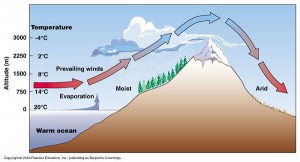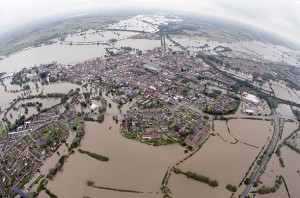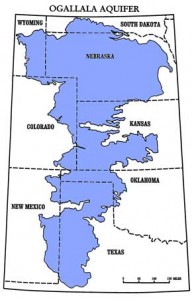One of the largest issues posed by climate changes is the decreasing availability of fresh water. With the population expected to rise to 9 million by the mid-21st century, the attention of the world will soon shift from concerns over fossil fuel resources to water sources. Water wars are nothing new, but with the increasing stresses of changing precipitation patterns, competition for water resources will be nothing short of fierce.
Climate-driven water shortages

Monsoonal rainfall occurs when clouds are too heavy to rise over mountain ranges. They may hang over and area for weeks before they have dumped enough water to blow over the mountains.
The warming atmosphere is expected to shift many of the conditions controlling patterns of precipitation, causing changes in weather patterns worldwide. Increasing evaporation due to higher temperatures will feed a more vigorous water cycle, introducing more frequent, violent monsoon events in some areas of the world. Therefore, monsoons, huge rainstorms caused by warm weather systems getting “stuck” on the ocean side of a mountain range, are expected to increase in intensity in southwest Asia. An increased volume of rainfall sounds like a good thing, but monsoonal rains fall too hard and too fast for the ground to absorb the liquid. Instead, high-speed rainfall will stir up huge volumes of mud and sediment and create big, muddy, dirty puddles, unfit for drinking and a breeding ground for infectious diseases.

Floods bring gallons and gallons of water, but most is unfit for drinking.
In other areas like the southwestern United States, the frequency of severe droughts is expected to increase sharply in the next decades. The Ogallala Aquifer, which spans eight southwestern states, supplies 30% of the groundwater used for irrigation in the Great Plains region, the “bread basket” of the country. Overuse of the aquifer has already led to severe depletion, and an increasingly arid climate will prevent the aquifer from recharging fast enough to keep up with human use. This will pose colossal problems for water systems that are already stretched thin, causing a swift drop in agricultural productivity and severe water shortages in the area of highest population increase in the country.
Like the Ogallala in the Great Plains, the Colorado River is the blood vessel of the North American west. Extending from central Wyoming all the way down to Mexico, this enormous river is the primary source of water for the driest area of the continent, supplying water to major cities like Los Angeles, Phoenix, and San Diego, supporting over 27 million people. Water distribution has been closely controlled since the 1800s, but each year, as the population in the west grows, there is less and less water to meet the residential and agricultural needs. Water rights between states and with Mexico are already hotly contested, and a more arid climate will continue to exacerbate the problem.
Sustainable use of the Colorado River
Adaptation
It is absolutely essential that we develop ways to conserve water. Fortunately, there are a few very simple ways to begin limiting our water intake. The open, concrete aquaducts that redirect the Colorado River across the southwest United States allows for nearly 90% of that water, the primary source of irrigation for the southwest and Mexico, to evaporate. Simply instaling covers over the concrete riverbeds would limit such an unnecessary loss.
On a broader scale, however, the solution is not so simple. WIth glaciers melting in the Alps and changing climate threating the rainfall we have come to expect, it will take some tremendous creativity to keep water available for a rapidly-growing population.
Tags: climate change, monsoons, Water shortage, water usage
